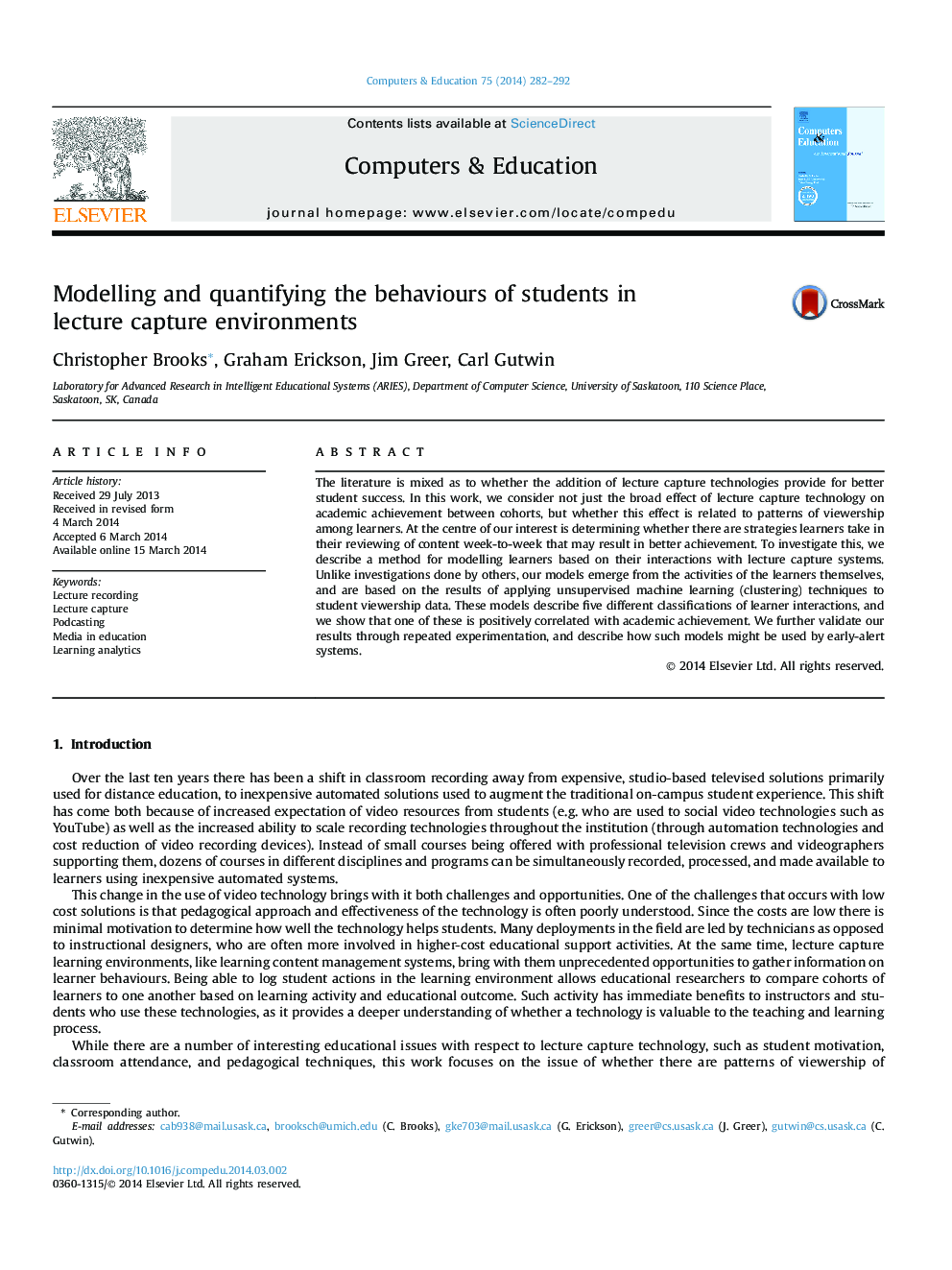| Article ID | Journal | Published Year | Pages | File Type |
|---|---|---|---|---|
| 348430 | Computers & Education | 2014 | 11 Pages |
•Learners can be grouped based on their behaviours in lecture capture environments.•These groups relate to learning strategies being employed by students.•Learners in one of these groups have higher achievement results than their peers.•Grouping of learners can be done automatically through unsupervised machine learning.•Modelling of learners has been validated through repeated experimentation.
The literature is mixed as to whether the addition of lecture capture technologies provide for better student success. In this work, we consider not just the broad effect of lecture capture technology on academic achievement between cohorts, but whether this effect is related to patterns of viewership among learners. At the centre of our interest is determining whether there are strategies learners take in their reviewing of content week-to-week that may result in better achievement. To investigate this, we describe a method for modelling learners based on their interactions with lecture capture systems. Unlike investigations done by others, our models emerge from the activities of the learners themselves, and are based on the results of applying unsupervised machine learning (clustering) techniques to student viewership data. These models describe five different classifications of learner interactions, and we show that one of these is positively correlated with academic achievement. We further validate our results through repeated experimentation, and describe how such models might be used by early-alert systems.
